Wild Facts About The Incredible Annie Oakley
Annie Oakley’s skill with a gun was unparalleled and honed for practically all her life, which made her famous when she showed off her incredible talents at Buffalo Bill’s Wild West show starting in 1885. Her rugged independence, incredible skill, and subtle charms made her an aspirational figure for young women for over a century.
As with many legends of the West, however, Oakley’s life story has had a tendency to get bigger in the telling over the years. Rather than rob her of her mystique, however, these facts about Annie Oakley will make it clear how incredible she truly was.
Annie Oakley Paid Her Mother’s Mortgage By Shooting
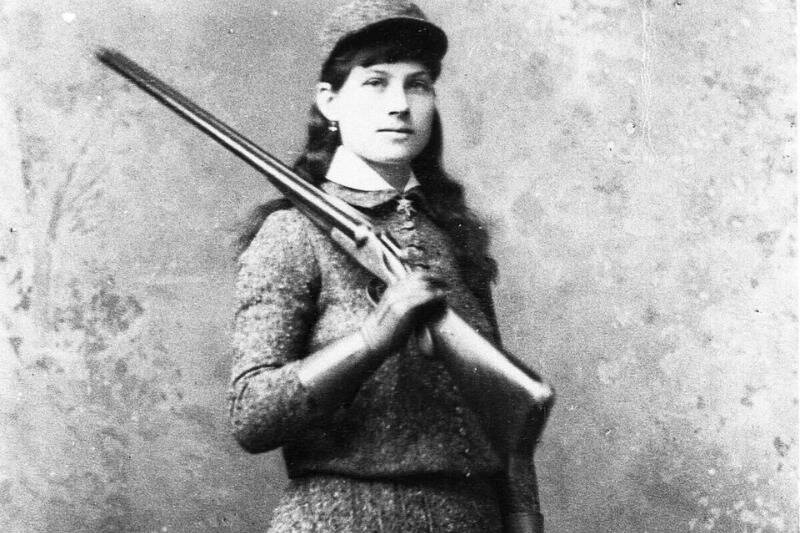
Considering the fame she would eventually see as part of Buffalo Bill’s Wild West Show, one might expect that the trick shots Oakley pulled while travelling with him earned her enough money to pay the mortgage on her mother’s house. Remarkably, however, Oakley had achieved that before she ever met Buffalo Bill.
According to the Smithsonian’s National Postal Museum, Oakley’s skill with a gun had been supporting her family ever since she grew up in Darke County, Ohio. There, she would hunt game and sell the resulting meat to local food stores and restaurants. She eventually proved successful enough at this to amass enough to pay the mortgage.
“Annie Oakley” Wasn’t Her Real Name
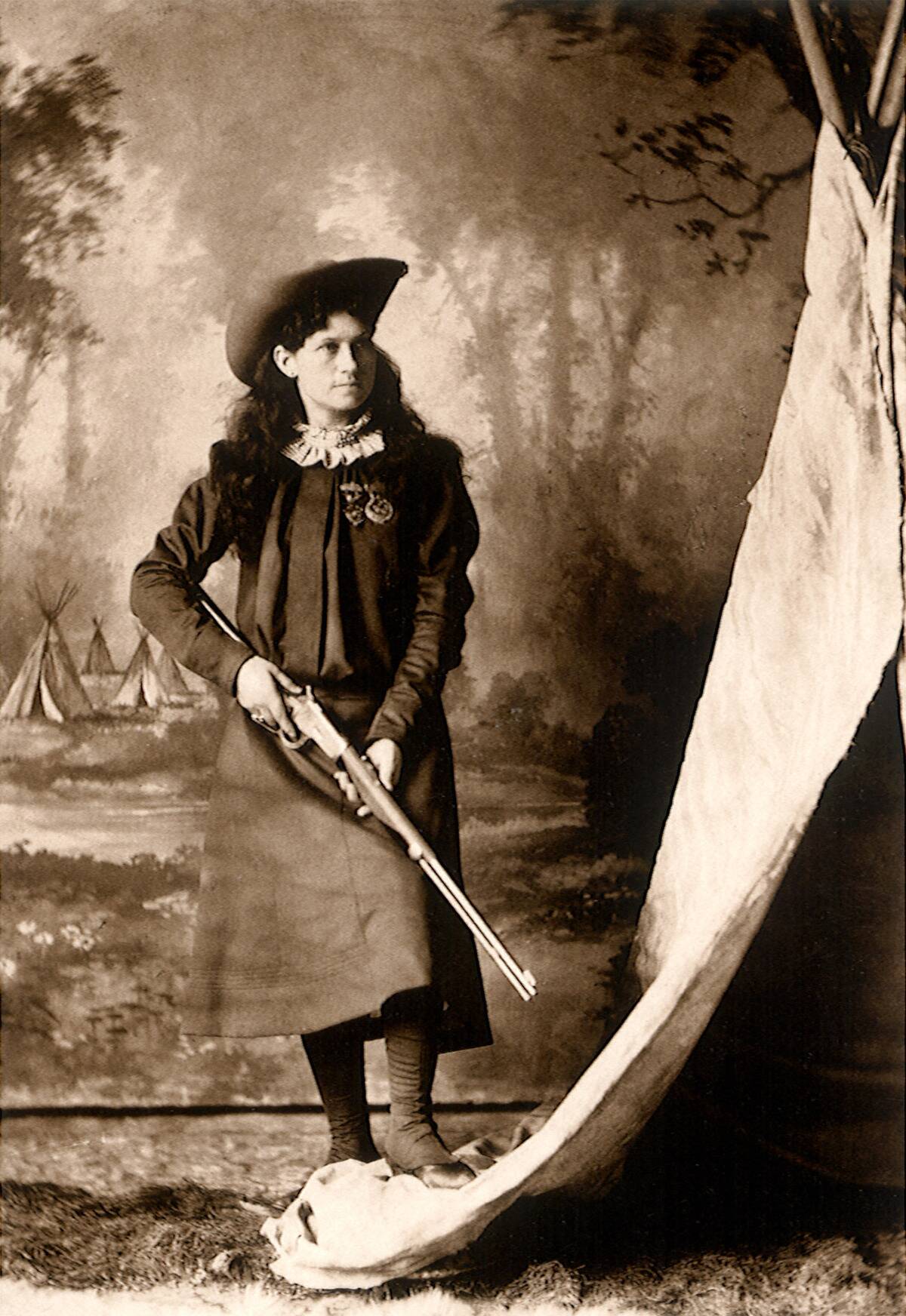
When Oakley was born, her parents neither named her Annie nor themselves had the last name Oakley. Instead, the History Channel noted that she was born Phoebe Ann Moses on August 13, 1860. She was the fifth of seven surviving children, as stillbirths were more common in those days.
So, how did she gain the name Annie Oakley? Well, the “Annie” part came from the fact that her sisters always called her that growing up. As for the “Oakley” part, she named her professional moniker after the nearest town to her childhood home.
Oakley Had A Difficult Childhood Before Her Hunts Started
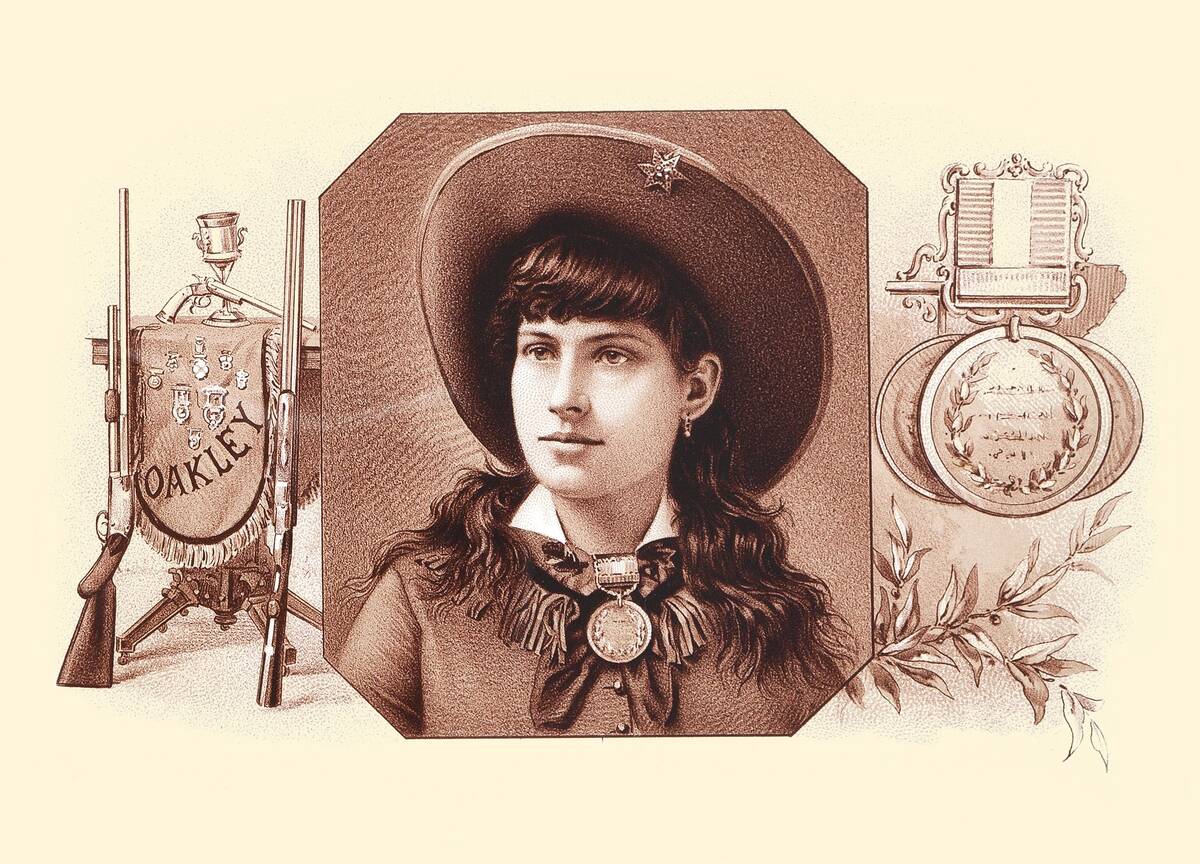
According to the National Women’s History Museum, Oakley’s father died of pneumonia when she was six years old, which left her mother to care for her and her five siblings. After yet another of her mother’s husbands died and left her with only a newborn baby, their family was reduced to the poorhouse.
To keep the number of mouths to feed to a minimum, Oakley was sent to live with the Edington family, where she learned to sew and care for the family’s younger children. However, she later stayed with a family who mistreated her severely enough that she later called them “the wolves.” Perhaps that’s what spurred her to learn to hunt at eight years old.
A Sister’s Passing Brought Even More Hardship
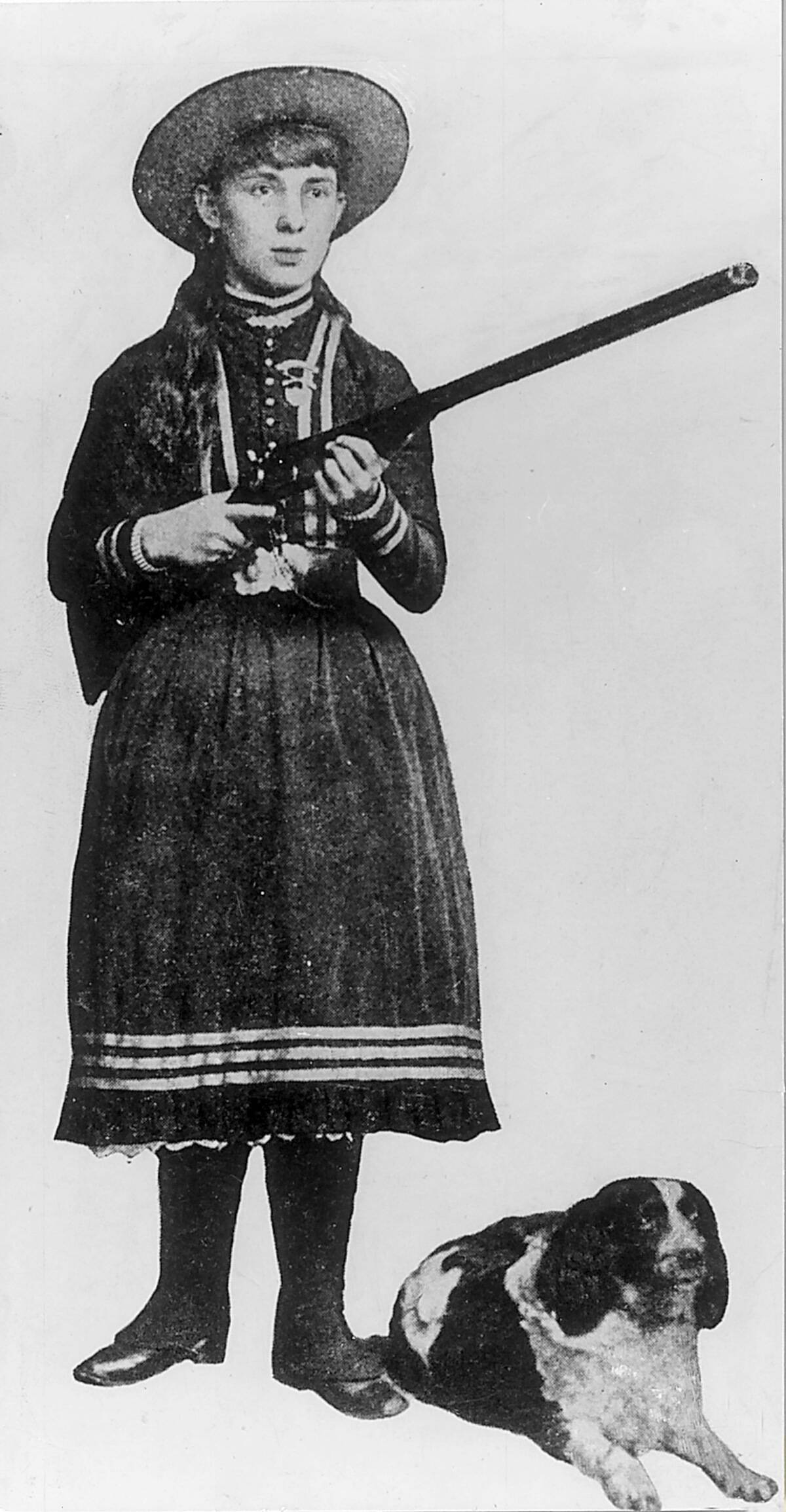
According to the Annie Oakley Center Foundation, Oakley’s eldest sister, Mary Jane, passed away from tuberculosis at the age of 15. Although her family was already struggling financially by this point, Mary Jane’s illness proved as exhausting in this respect as it was emotionally for them.
That was because Oakley’s mother had to sell the family’s milk cow, “Pink,” to pay for both Mary Jane’s medical and funeral expenses. Naturally, this only made her family’s position all the more precarious after all was said and done.
Running Away From “The Wolves” Taught Oakley A Lesson
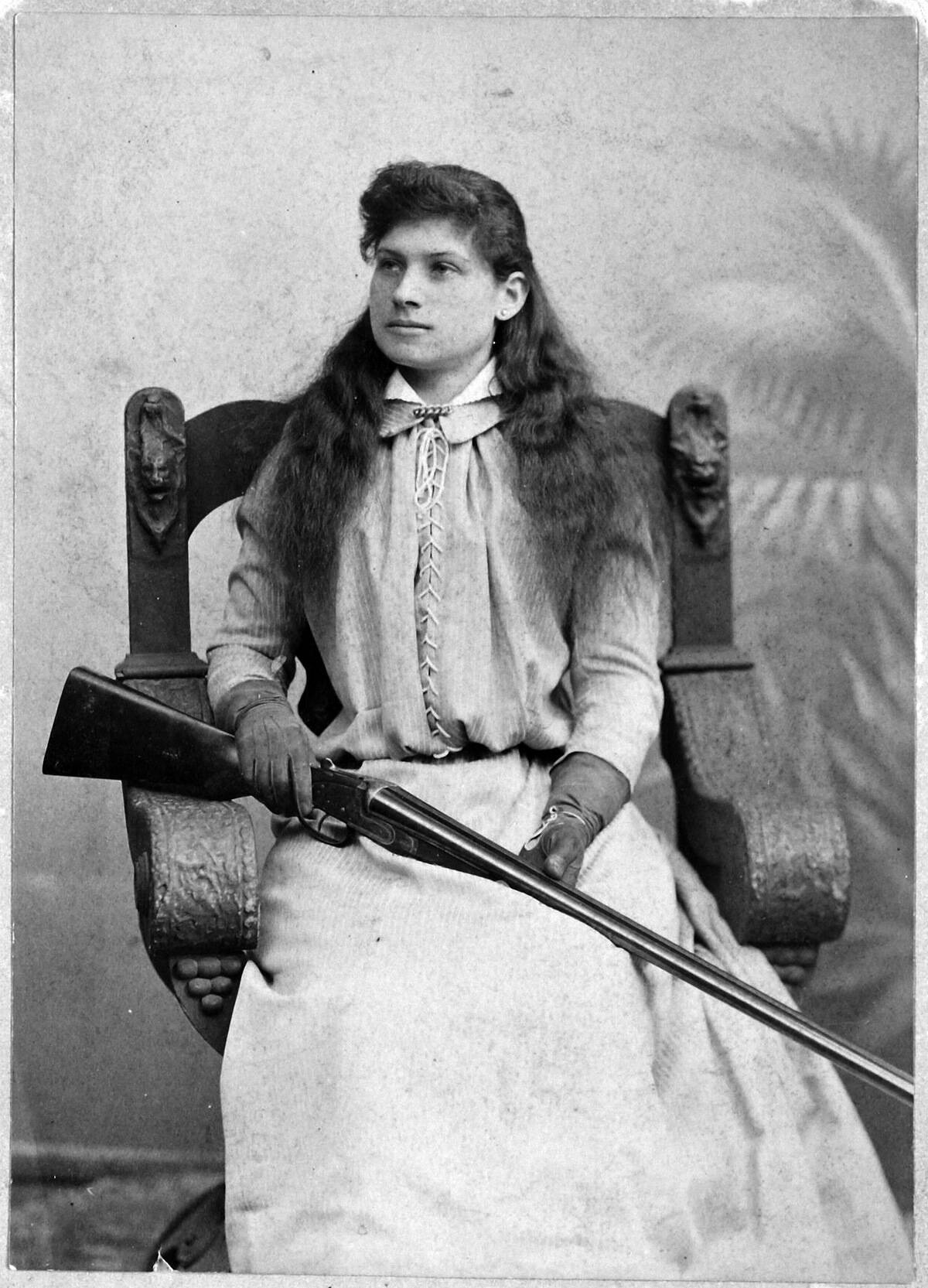
While Oakley’s values were shaped by her mother’s Quaker upbringing to a large extent, they were also influenced by the circumstances of her childhood. When she finally ran away from “the wolves” after turning ten, the Annie Oakley Center Foundation described her walking to a train depot before realizing she couldn’t pay for a ticket.
However, she happened to encounter a man who listened to her story and bought food and a train ticket for her, which led her to pray for his well-being for years after the fact. As she would later write, “People have asked me, ‘But why do you give as you do? Why do you not spend more on yourself?’ If I spend one dollar foolishly, I see tear-stained faces for little children beaten as I was.”
Oakley Met Her Husband By Besting Him
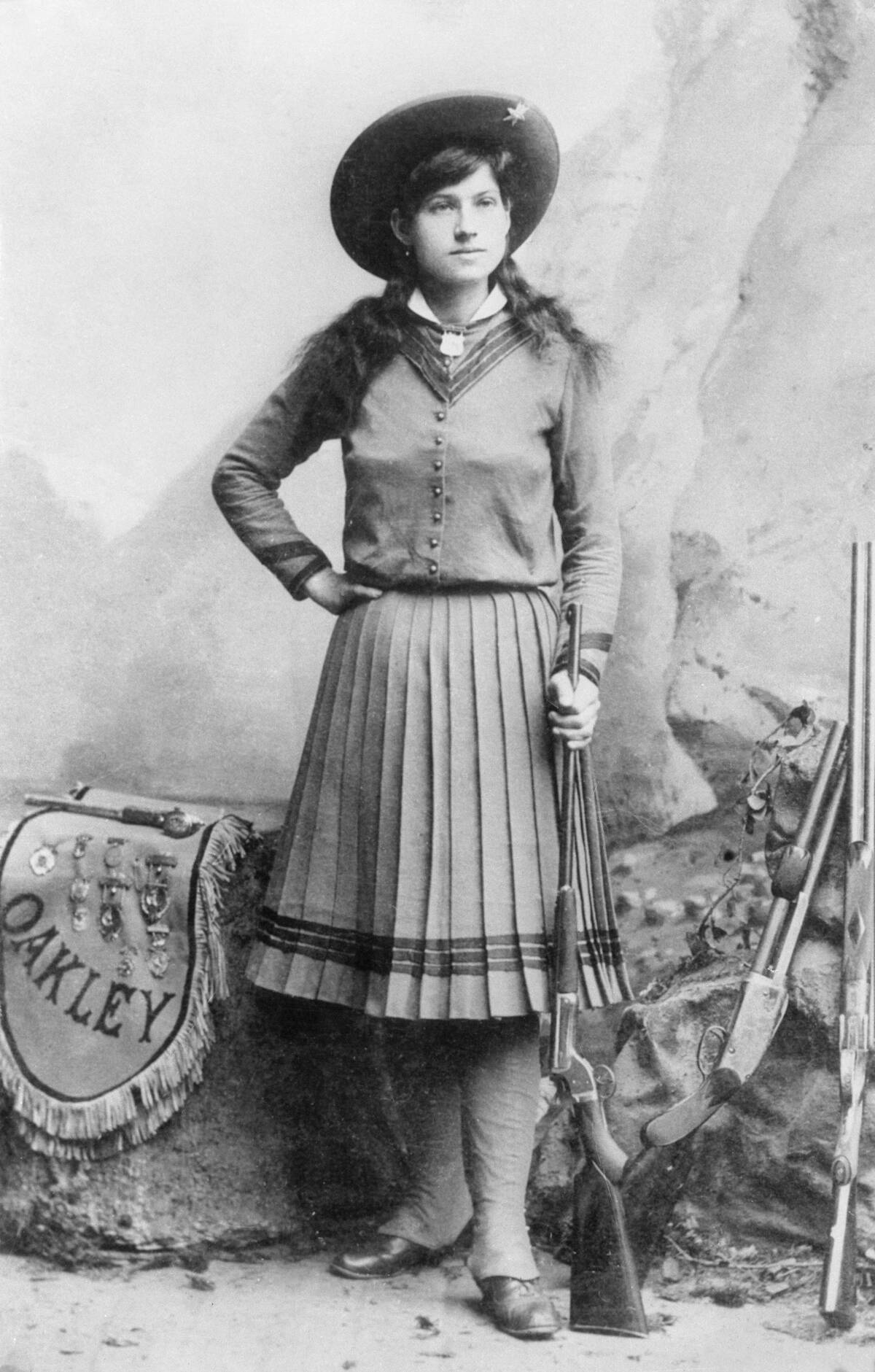
According to Mental Floss, Oakley participated in a Cincinnati shooting competition when she was 15 that saw her face off against a professional marksman named Frank Butler. Butler had placed a $100 bet on himself (which was half Oakley’s mortgage), but lost it after Oakley shot one more clay pigeon than him.
Although the History Channel noted that Butler chuckled when he first saw Oakley, he became infatuated with her when she beat him. Oakley was clearly charmed by him as well, as they married just a year later and stayed together for 50 years until their deaths.
Sitting Bull Grew Close Enough To Oakley To Name Her
![[redacted] born circa 1831 died 1890. Hunkpapa Lakota Sioux holy man. Portrait on a 19th century cabinet card.](https://media.tellmebest.com/wp-content/uploads/2023/08/sitting-bull-born-circa-1831-died-1890.-hunkpapa-lakota-sioux-holy-man.-portrait-on-a-19th-century-cabinet-card-15253.jpeg)
By the time Oakley was traveling with Buffalo Bill’s Wild West Show in 1885, the famed Lakota revolutionary leader Sitting Bull had also embarked on an improbable collaboration with the frontiersman. His time with Buffalo Bill was short, but it was long enough for Sitting Bull to take a genuine shine to Oakley.
According to Mental Floss, he would eventually bestow the name Watanya Cicillia onto her, which means “Little Sure Shot,” as Oakley was just five feet tall. He also gave her a special pair of moccasins to indicate that he was (perhaps informally) adopting her as his daughter.
Oakley Joined Buffalo Bill’s Show By Sheer Chance

According to the History Channel, Buffalo Bill Cody initially refused to hire Oakley, as he already had a world champion marksman in Captain Adam Bogardus. However, Bogardus would end up losing his prized weapons after a steamboat carrying the Wild West Show’s performers (who all survived) sank to the bottom of the Mississippi River.
Even after trying for a month, Bogardus couldn’t get used to any replacement guns, which meant he quit the Wild West Show in March 1885. With his spot vacant, Oakley was free to show America how impressive her skills were.
Oakley Tried To Lead An All-Female Corps In World War I
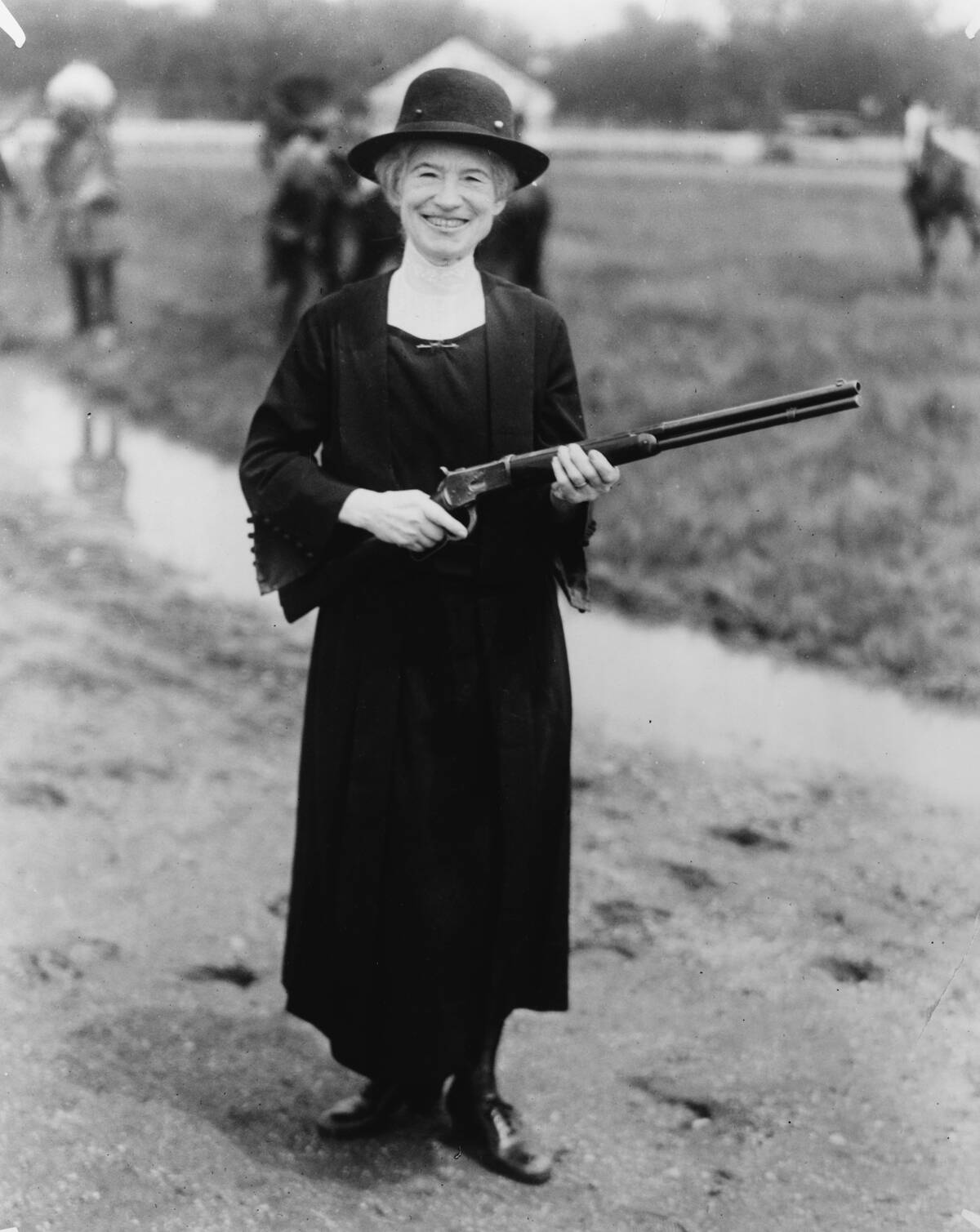
Prior to the outbreak of the Spanish-American War, Oakley wrote then-president William McKinley on her official stationery, offering to lead a company of 50 female sharpshooters for the war effort. Likely out of an unwillingness to see women in military combat roles at the time, her offer was not accepted.
After World War I broke out, Oakley made a similar offer to Woodrow Wilson in the event that the United States became involved (which they eventually did). As the History Channel noted, however, she was no more successful in persuading the president to approve of her idea than she had been with McKinley.
Oakley Performed For European Royalty
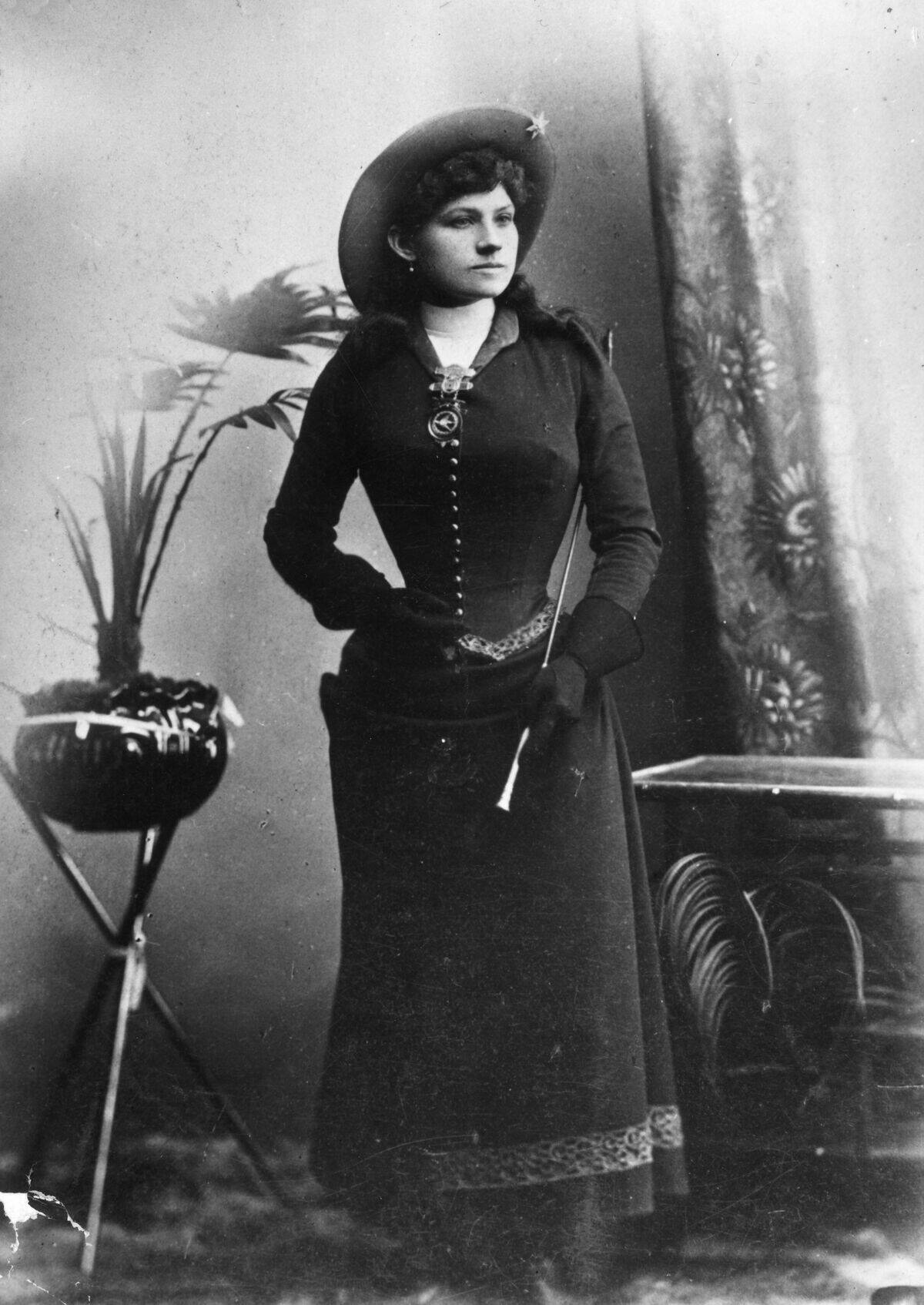
Although Buffalo Bill’s Wild West Show was a distinctly American phenomenon, that doesn’t mean that its touring schedule was exclusive to the United States. The show toured Europe, which means that Oakley’s renown grew as she performed throughout the United Kingdom, Italy, Spain, and a particularly significant French stop at the Paris Exposition in 1889.
According to Mental Floss, Oakley grew so internationally famous for her exploits that the king of Senegal apparently wanted her to help control his country’s tiger population. For her part, Queen Victoria described Oakley as a “very clever little girl” after watching her perform in 1887.
Oakley Successfully Sued William Randolph Hearst
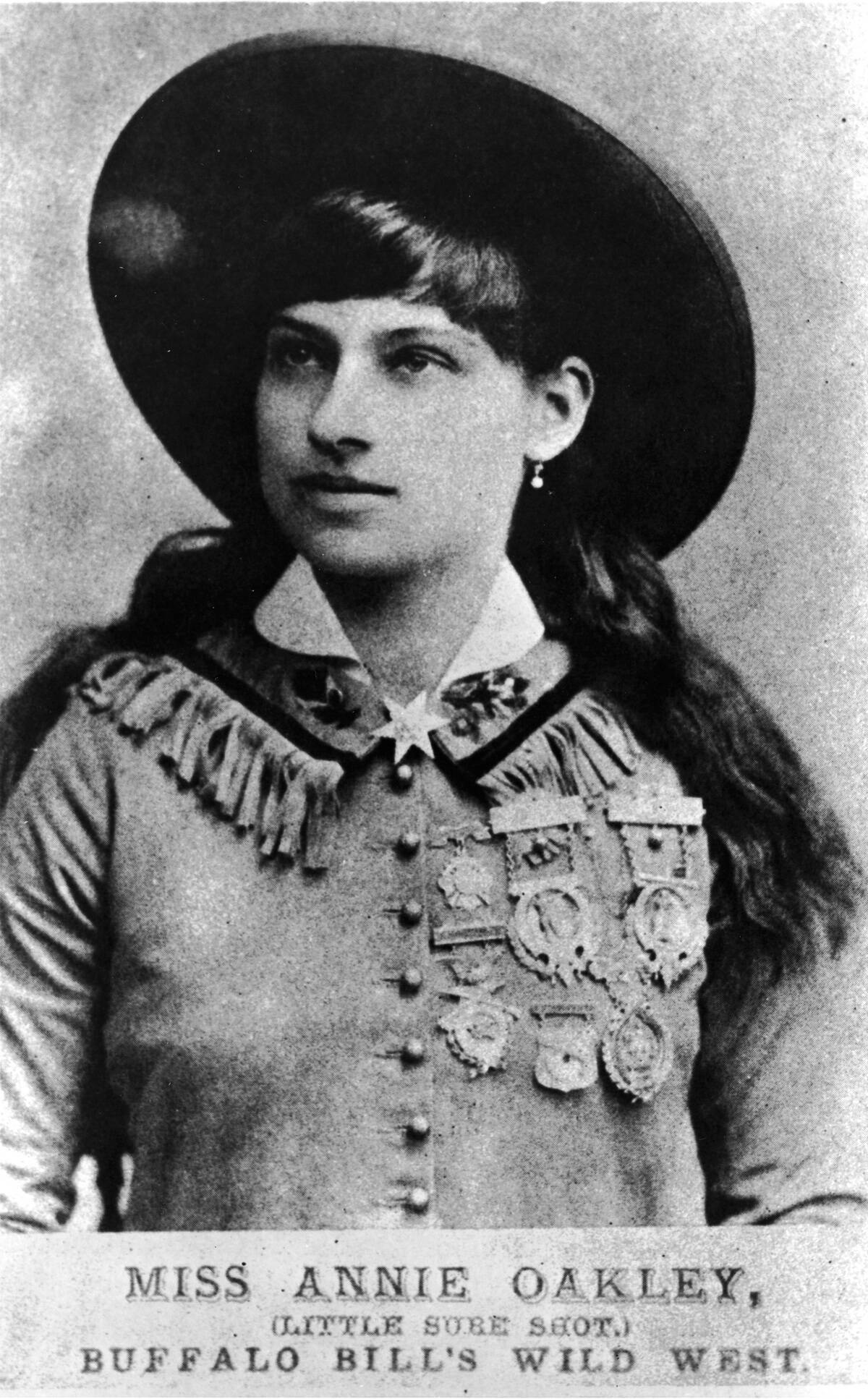
According to the History Channel, two Chicago newspapers owned by William Randolph Hearst reported that Oakley had been arrested for stealing a pair of men’s pants to pay for a narcotics addiction on August 11, 1903. However, not only did Oakley likely have no such addiction, but she hadn’t even been in Chicago since the previous winter. Instead, the arrested woman was a burlesque performer impersonating her.
Once most of the newspapers that reprinted the story realized the mistake, they issued retractions. However, Oakley nonetheless sued 55 different papers across the nation, saying, “Someone will pay for this dreadful mistake.” It was the largest libel suit the country had seen at the time and resulted in victories or settlements in 54 of those cases. For his part, Hearst had to pay Oakley $27,000, which would be over $900,000 today.
Thomas Edison Made Oakley A Very Early Film Star
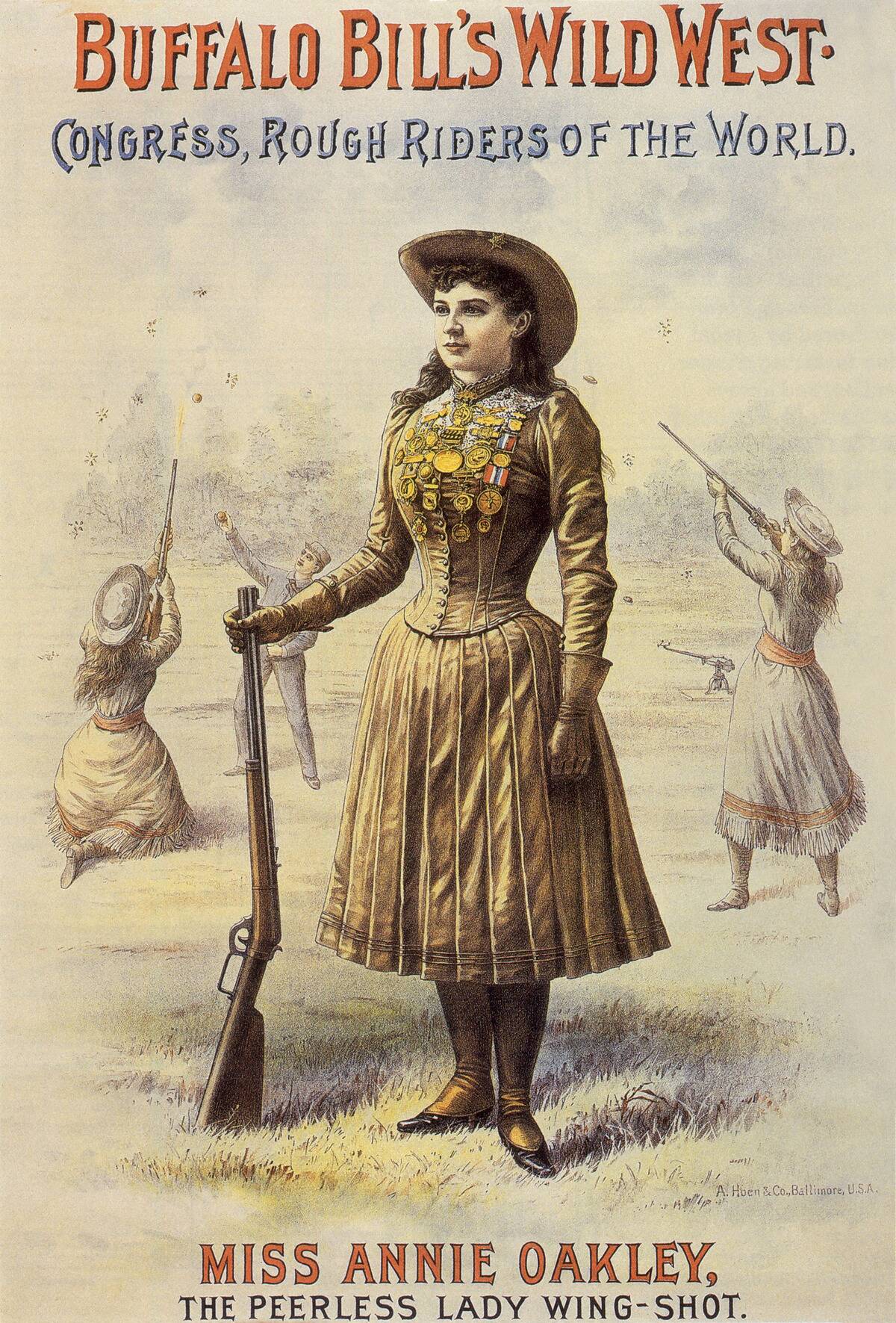
In 1894, Thomas Edison produced a Kinetoscope film called The “Little Sure Shot” of the “Wild West,” which was directed by William Heise. Rather than intending this as an early biopic of Oakley, Edison’s ambitions were much simpler: He wanted to hire her to film her shooting.
While he likely expected a film featuring a nationally recognized figure to attract the public’s interest, a more fundamental curiosity compelled him to reach out to Oakley. As Potter’s Wax Museum explained, Edison was curious to see whether his technology could capture the smoke from Oakley’s rifle.
Oakley Competed At Wimbledon
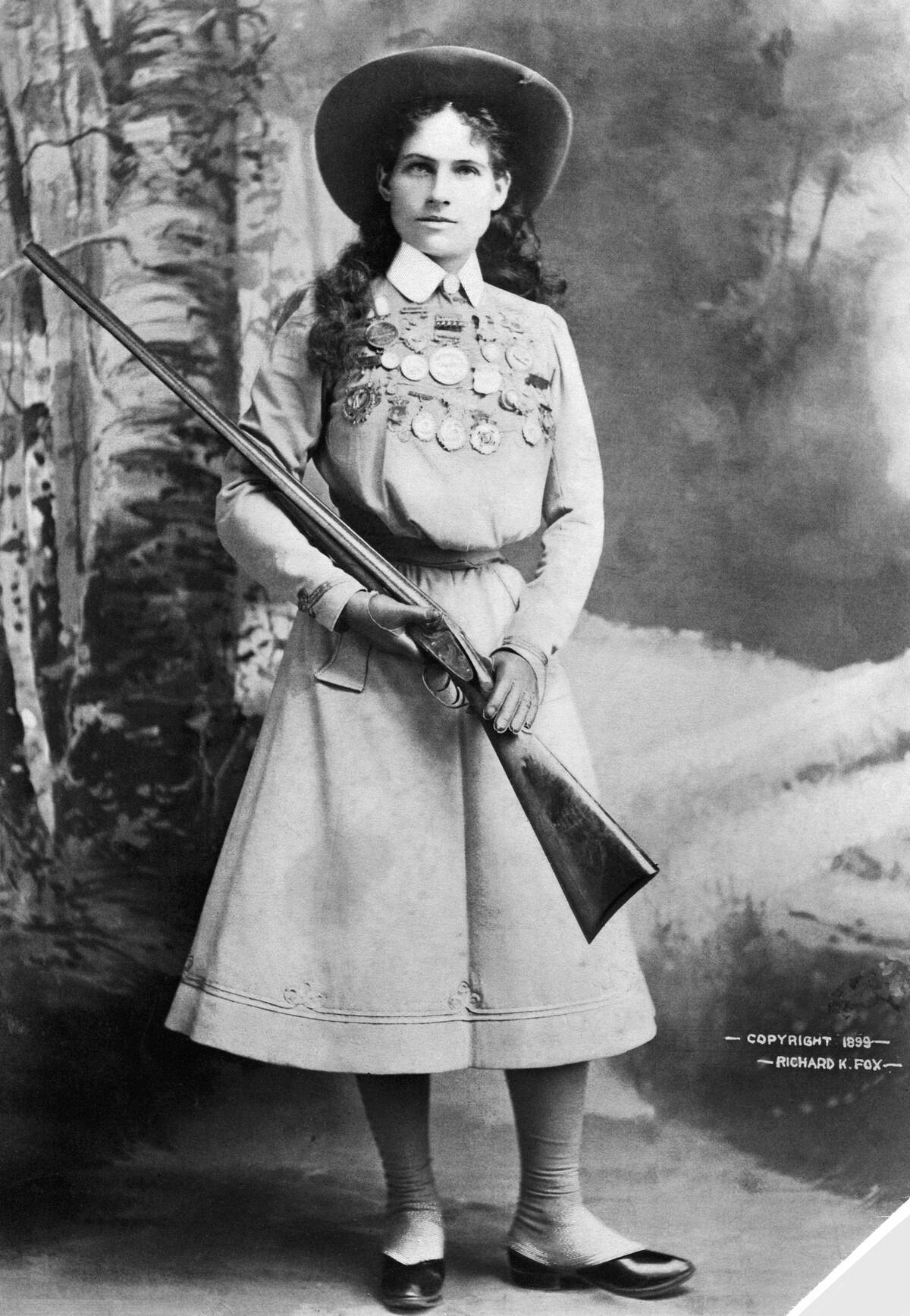
Considering Oakley’s incredible talents and what Wimbledon is now known for, it’s easy to assume that Oakley was also an accomplished tennis player whose relevant skills were overshadowed by her shooting prowess. However, Wimbledon was a very different sporting hub in 1887.
According to the History Channel, Wimbledon hosted England’s biggest shooting event, which naturally compelled Oakley to sign up for a rifle competition while the Wild West Show was in London to celebrate Queen Victoria’s Golden Jubilee. After Oakley took aim at Wimbledon Common on July 20, 1887, the London Evening News described her as “far and away” the best shot among those present.
Oakley Had A Rough 20th Century Due To Two Accidents
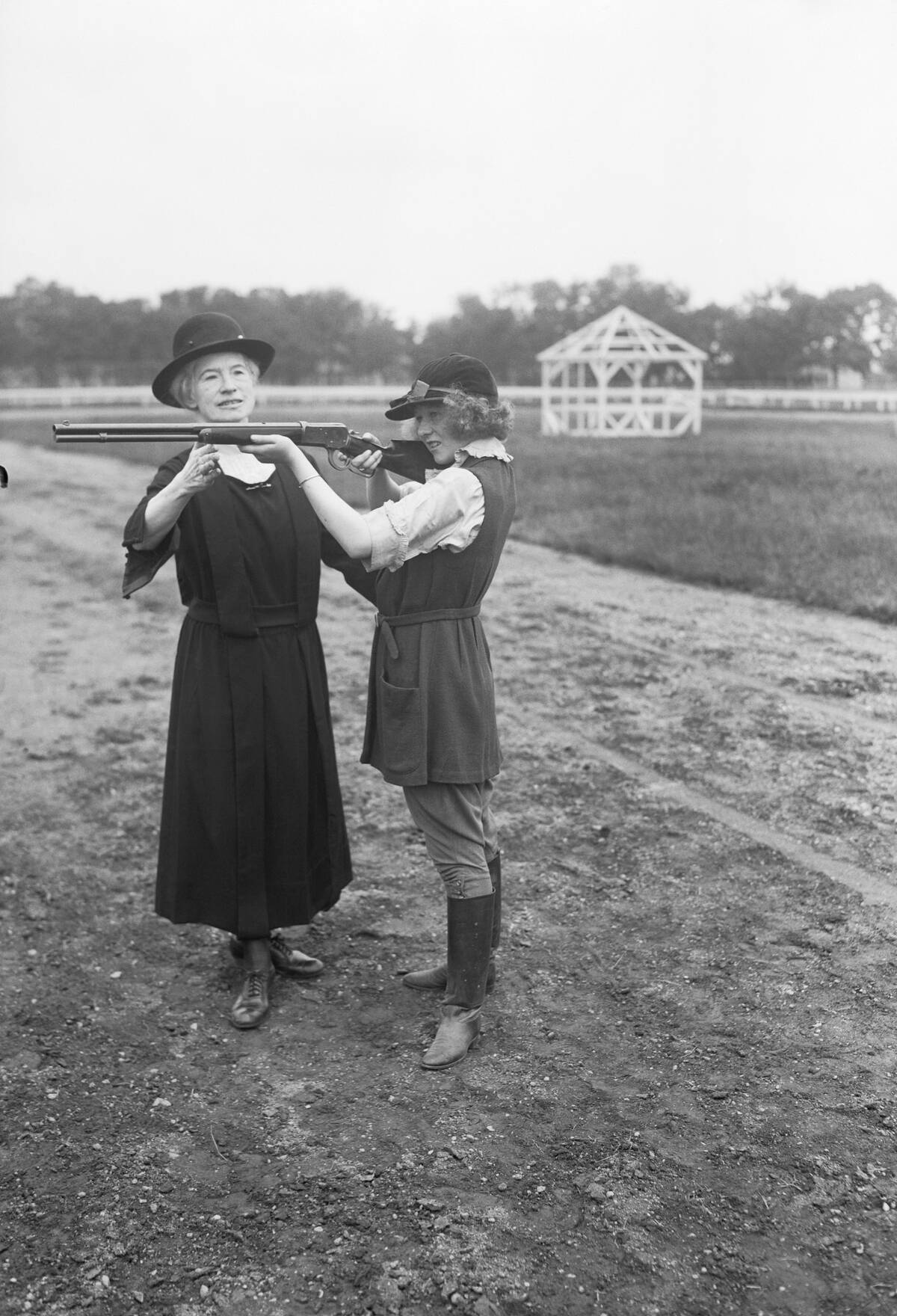
As if the saga with Hearst wasn’t enough to get the 20th Century off to a bad start for Oakley — as well as the fact that she ultimately lost money clearing her name due to the scope of the legal costs — Oakley was involved in a train accident in 1901 that kept her from performing for a year.
The more destructive of her two accidents, however, took place in 1921, when she was injured in a car accident in Florida. Her fractured hip and ankle made it so Oakley had to wear a leg brace until she passed away from pernicious anemia in 1926. She was 66.
Her Attitude Towards Women’s Rights Was Complicated
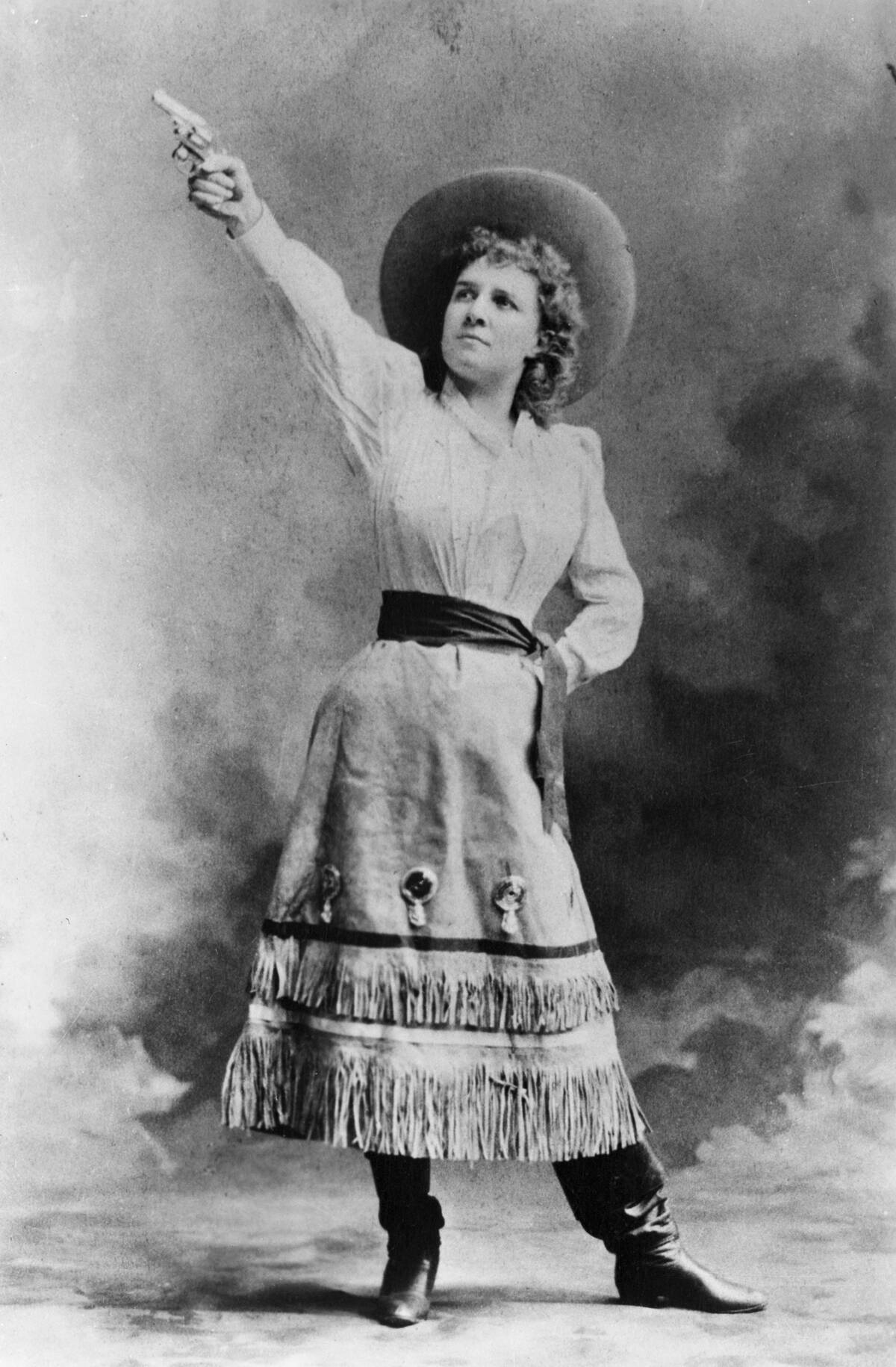
In some ways, Oakley was ahead of her time when it came to the women’s rights she championed. In addition to arguing for the inclusion of women in the military, the History Channel also credited her for campaigning for equal pay for equal work and standing up against economic gender discrimination.
In terms of political discrimination, however, Oakley was far less concerned. Indeed, she was not an advocate for the right of women to vote and didn’t even really seem to embrace the idea. At best, she considered it acceptable, “If only the good women voted.”



